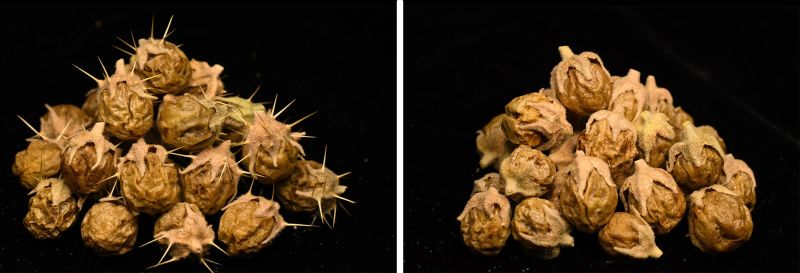USA
August 1, 2024
Every rose has its thorn. Or rather, every rose has its prickle, a sharp projection of the plant's skin that can serve as a deterrent to herbivores but also makes cultivating roses and other plants more difficult. New research supported by the U.S. National Science Foundation has found a similar mechanism controls prickle growth and loss across plants, from roses to eggplants, even though they diverged evolutionarily nearly 165 million years ago.
The finding helps to answer a longstanding question in biology as to how much examples of convergent evolution — when similar adaptations occur independently in unrelated lineages —depend on the same genetic tools. It also opens the possibility of breeding prickle-less versions of plants that naturally grow without the potentially harmful extensions of skin. The researchers, led by those at Cold Spring Harbor Laboratory, were able to eliminate prickles in a wild species and an indigenously foraged berry.
 Wild type Desert raisin (S. cleistogamum) grows with prickles in Australia. New NSF-supported research on the genetic mechanism behind prickle growth and loss enabled the use of gene editing to facilitate rapid improvement in the harvestability of the plant. - Credit: Blaine Fitzgerald, Cold Spring Harbor Laboratory
Wild type Desert raisin (S. cleistogamum) grows with prickles in Australia. New NSF-supported research on the genetic mechanism behind prickle growth and loss enabled the use of gene editing to facilitate rapid improvement in the harvestability of the plant. - Credit: Blaine Fitzgerald, Cold Spring Harbor Laboratory
The ability to generate easier-to-cultivate relatives of prickled plants could allow scientists and breeders to increase the agricultural use of plants with sought-after traits like resilience to drought or pests. Even for roses, eliminating prickles would be quite impactful, as currently they are often removed from commercial varieties in a lengthy manual process.
"Looking at a rose, rice and an eggplant you might not think they are closely related, and you'd be right, but they still use the same genetic toolkit to either grow or not grow this common plant defense tool," said Diane Jofuku Okamuro, a program director in NSF's Directorate for Biological Sciences, which funded the work. "In learning how plants produce or don't produce prickles naturally, we can work to increase the variety of plants we grow for food, a critical effort in the face of increased environmental change."